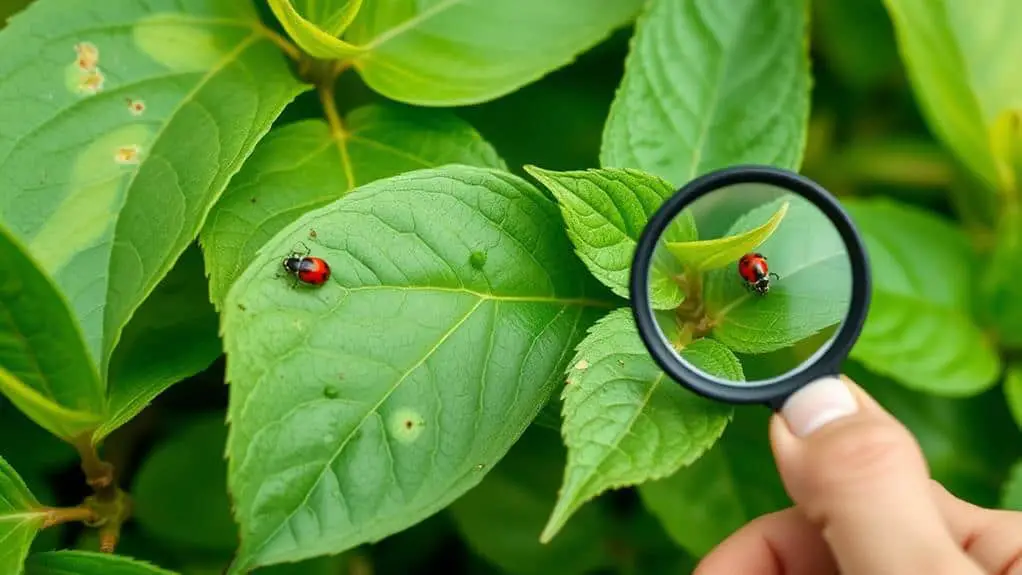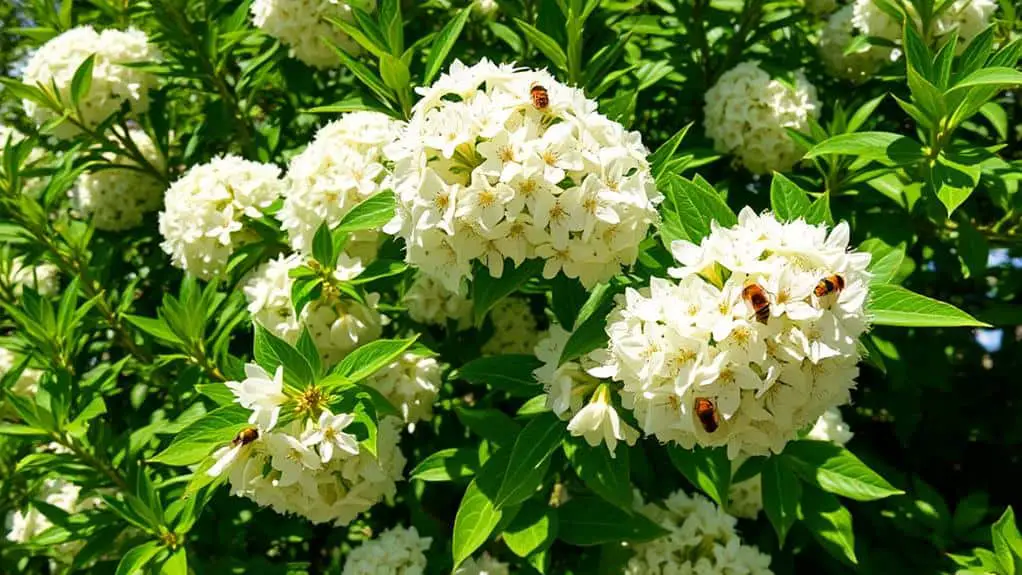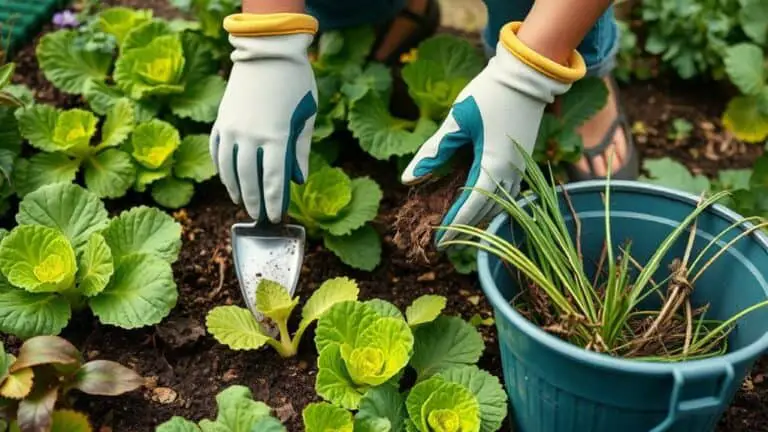How To Grow And Care For Mock Orange
When you're thinking about adding a Mock Orange to your garden, it's essential to understand the basics of its care and growth requirements. This beautiful, fragrant shrub needs a sunny spot with well-drained, loamy soil to thrive. Plant it in the spring or early fall, and guarantee it gets at least six hours of sunlight daily. Watering is particularly important in the first few years, and pruning after flowering will help maintain its shape. You'll also need to keep an eye out for common pests like aphids and spider mites. Curious about the best ways to protect and nourish your Mock Orange through the seasons?
Overview of Mock Orange

Why not add a touch of elegance to your garden with mock orange?
Mock Orange Shrubs, scientifically known as Philadelphus, are deciduous plants that showcase fragrant white flowers similar to orange blossoms. Blooming in late spring, these shrubs are hardy in zones 4-8, making them suitable for various climates.
They can grow between 3 to 10 feet tall and wide, depending on the variety you choose. To keep your Mock Orange Shrubs healthy, plant them in well-drained soil.
These shrubs also attract pollinators like bees and butterflies, adding life to your garden.
Two popular varieties include 'Snowbelle,' which has compact double white flowers, and 'Natchez,' known for its large, fragrant blooms.
Enjoy these elegant additions to your garden!
Ideal Growing Conditions
To achieve the best results with your mock orange shrubs, guarantee they receive full sun to partial shade, with at least 6 hours of direct sunlight each day.
These shrubs thrive in well-drained, loamy soils with a pH range of 6.0 to 8.0. This encourages healthy root development and nutrient absorption.
Once established, mock orange shrubs are drought tolerant and need moderate watering, especially during dry spells in their initial years.
They're hardy in USDA zones 4-8, making them adaptable to various climates.
To help retain soil moisture and suppress weeds, consider mulching around the base of the plant.
Planting Techniques

When planting mock orange shrubs, start by timing your efforts for spring or early fall to give the roots the best chance to establish.
Choose a sunny or partially shaded spot with well-drained, loamy soil. Dig a hole twice the width of the root ball and as deep. Before planting, mix in some organic matter like compost to boost soil fertility.
Place the mock orange in the hole, making sure the top of the root ball is level with the ground. Fill the hole with soil, gently firming it around the roots.
Maintenance and Care
Proper maintenance and care are key to keeping your mock orange shrubs healthy and vibrant. Start by pruning your shrubs right after they finish flowering. This keeps their shape and promotes new growth. Remove any dead or diseased branches annually.
To boost blooming, fertilize with a balanced fertilizer in early spring. Mock orange doesn't need heavy feeding, so don't overdo it.
Water well, especially during the first couple of years. Make sure the soil stays moist but not waterlogged to avoid root rot. Applying mulch around the base helps retain moisture and suppress weeds.
Keep an eye out for pests like aphids and spider mites. Treat infestations with insecticidal soap or horticultural oil to protect your plants.
Common Varieties

Among the numerous varieties of mock orange, each offers unique features that can enhance your garden.
The 'Snowbelle' is a compact Mock Orange Bush with double white flowers, growing 3 to 4 feet tall, perfect for small gardens or containers.
'Natchez' dazzles with large, fragrant blooms, reaching up to 8 feet, making it a striking flowering shrub.
'Aurea' stands out with golden foliage and late spring blooms, adding visual interest.
For tight spaces, consider 'Miniature Snowflake', a smaller cultivar that also grows 3 to 4 feet tall.
Finally, the 'Minnesota Snowflake' is a hardy variety thriving in USDA zones 3-8, known for its exceptionally fragrant flowers, which make excellent cut flowers.
Each variety can enrich your garden beautifully.
Propagation Methods
Propagating mock orange can be achieved through several effective methods, ensuring you can easily expand your garden. You can propagate mock orange using stem cuttings, layering, seeds, and suckers. For stem cuttings, take 4-6 inch pieces from new growth after flowering, dip them in rooting hormone, and place them in moistened potting mix. Layering involves bending a low branch to the ground, scraping the bark, burying part in soil, and keeping it moist. Suckers are dormant shoots from the plant's base, harvested in winter and replanted immediately. Here's a handy table to guide you:
| Method | Key Steps |
|---|---|
| Stem Cuttings | Take cuttings, dip in hormone, place in mix |
| Layering | Bend branch, scrape bark, bury in soil |
| Seeds | Cold stratify, plant in well-drained soil |
| Suckers | Harvest dormant suckers, replant immediately |
| Monitoring | Watch cuttings, transplant after 3-4 weeks |
These methods will help you grow a thriving mock orange garden!
Pests and Problems

When caring for your mock orange, you might encounter pests like aphids, spider mites, and black scale, but don't worry—horticultural oil or insecticidal soap can help manage them effectively.
Although these plants are usually disease-resistant, watch out for bacterial blight and brown spot, especially after heavy rain.
To keep your mock orange healthy, water the base of the plant, make certain the soil drains well, and inspect regularly for any signs of trouble.
Common Mock Orange Pests
Mock orange shrubs, like many garden plants, can fall victim to a few common pests that threaten their health and beauty.
Aphids, spider mites, and black scale are frequent nuisances. Aphids cause leaf curling and stunted growth but can be managed with insecticidal soap or horticultural oil.
Spider mites thrive in hot, dry conditions, leading to yellowing leaves and webbing. Regular watering and increased humidity can help keep them at bay.
Black scale, a sap-sucking insect, weakens plants and can be controlled through manual removal or insecticidal soap.
Early intervention is key to preventing significant damage. By staying vigilant, you can keep your mock orange shrubs healthy and vibrant, ensuring their lasting beauty in your garden.
Managing Plant Diseases
Maintaining the health of your mock orange shrub means being proactive about managing plant diseases. Start by monitoring for pests like aphids and spider mites. These can cause leaf curling and damage, so treat infestations with insecticidal soap.
Watch out for signs of bacterial blight, which shows as wilting and darkened leaves, especially in rainy or humid conditions. To prevent powdery mildew and gray mold, water at the base and guarantee good air circulation.
Regularly inspect for brown spot disease, which thrives in wet conditions; proper spacing and pruning can help. Early intervention is key. Address issues promptly to prevent significant damage.
With these steps, you'll keep your mock orange healthy and thriving.
Winterization Tips
As winter approaches, it's essential to prepare your mock orange for the cold.
Make sure to water your shrubs well before the first frost and mulch around the base to protect the roots.
On particularly chilly nights, covering the plants with burlap or sheets can help shield them from frost damage.
Preparing for Frost
Before the first frost hits, guarantee you thoroughly water your mock orange shrubs. This confirms they're well watered and better prepared for cold temperatures.
Pruning should be done before winter to help the plant stay healthy.
To prepare your shrubs for frost, try these tips:
- Water deeply: Confirm the soil is well watered to retain soil moisture.
- Apply mulch: A generous layer around the base will insulate the roots.
- Cover with fabric: Use breathable sheets to protect from frost damage.
- Move potted plants: Place them in unheated, sheltered areas to avoid freezing.
Protecting Roots Efficiently
Winterizing your mock orange shrubs is essential to assure they survive the colder months. Start by watering them thoroughly before the first frost to ensure the roots are well-hydrated. This helps in protecting roots from freeze damage.
Next, apply a generous layer of mulch, like bark or straw, around the base to insulate the roots and retain soil moisture. For young shrubs, consider wrapping the base with burlap or using frost cloths on very cold nights.
If your mock oranges are potted, move them to an unheated garage or shed. This prevents freeze damage while still allowing light exposure.
Monitor the weather and adjust your protection measures, especially during temperature swings or heavy snowfall.
Benefits of Mock Orange

Boasting fragrant white flowers, mock orange shrubs attract pollinators like bees and butterflies, greatly enhancing your garden's biodiversity.
This flowering shrub isn't just beautiful; it offers several practical benefits for your garden:
- Deer-Resistant: Once established, mock orange is deer-resistant, making it perfect for areas with high deer populations.
- Drought Tolerant: These shrubs are drought tolerant, reducing the need for frequent watering and promoting sustainable gardening.
- Aesthetic Appeal: With their stunning blooms and dark green foliage, they add visual interest to your landscape all season long.
- Versatility: Mock oranges can be used in various garden designs, from specimen plants to informal hedges and perennial beds.
These benefits make mock orange a fantastic choice for any gardener.
Wildlife Interaction
When growing mock orange, you'll find that it's deer-resistant once established, making it a great choice for areas with lots of deer.
However, young plants can attract deer, so you'll need to protect them until they mature.
Also, watch out for rabbits in the spring, as they love to nibble on the tender tips, and consider using protective wrapping to keep your plants safe.
Deterring Deer Effectively
To effectively deter deer from your mock orange plants, early protection is essential, especially for young shrubs.
These deer-resistant plants need a bit of extra care when they're just starting out. Here are some effective protective measures:
- Plant Groupings: Plant mock orange alongside other deer-resistant plants to create a natural barrier.
- Deer Repellents: Use deer repellents with ingredients like putrescent egg solids or garlic to keep deer at bay.
- Regular Inspections: Check your garden often for deer activity and adjust your protective measures as needed.
- Physical Barriers: While mesh hardware cloth is more for rabbits, consider using deer-specific netting around young plants.
Rabbit Damage Prevention
While deer can be a concern, rabbits pose a different threat to your mock orange plants, especially in early spring.
Rabbit damage prevention is vital to protect the tender new growth of young mock orange shrubs. Start by wrapping the trunks with mesh hardware cloth, making certain it extends several inches above the ground.
Creating a physical barrier, like a garden fence, can also help keep rabbits out. Regularly inspect your garden for rabbit activity, such as droppings or gnaw marks, to catch issues early.
Additionally, planting rabbit-resistant companion plants, such as lavender or marigolds, around your mock orange can reduce their attraction to the area.
These steps will help guarantee your plants thrive despite the presence of these furry visitors.
Frequently Asked Questions
Where Does Mock Orange Grow Best?
Mock orange grows best in an ideal climate of USDA zones 4-8. Confirm it gets full sun, at least 6 hours daily. It prefers well-drained, loamy soil. While drought-tolerant, moderate watering helps maintain moisture during dry spells.
What Is the Best Fertilizer for Mock Orange?
You should use a balanced, slow-release granular fertilizer with a 10-10-10 nitrogen balance, applied in early spring. Organic options like compost are great too. Proper application timing guarantees healthy growth and beautiful blooms.
Can Mock Orange Grow in Full Shade?
Mock orange's shade tolerance is limited; it won't thrive in full shade. To improve growth, use proper pruning techniques, effective pest management, and follow good planting tips. Guarantee partial sunlight for better blooms and healthier plants.
Why Has My Mock Orange Never Bloomed?
Your mock orange's blooming issues might stem from insufficient pruning techniques, poor soil requirements, or pest management problems. Make certain it gets full sun, proper pruning, balanced fertilizer, and well-drained soil to encourage flowering.
Conclusion
Growing and caring for Mock Orange is easier than you might think! Just pick a sunny spot, give it well-drained soil, and water it properly, especially in the beginning. Prune after it blooms to keep it looking great, and remember to fertilize in early spring. Keep an eye out for pests and protect young plants in winter. With a bit of love and attention, you'll enjoy beautiful, fragrant blooms each year. You've got this!







